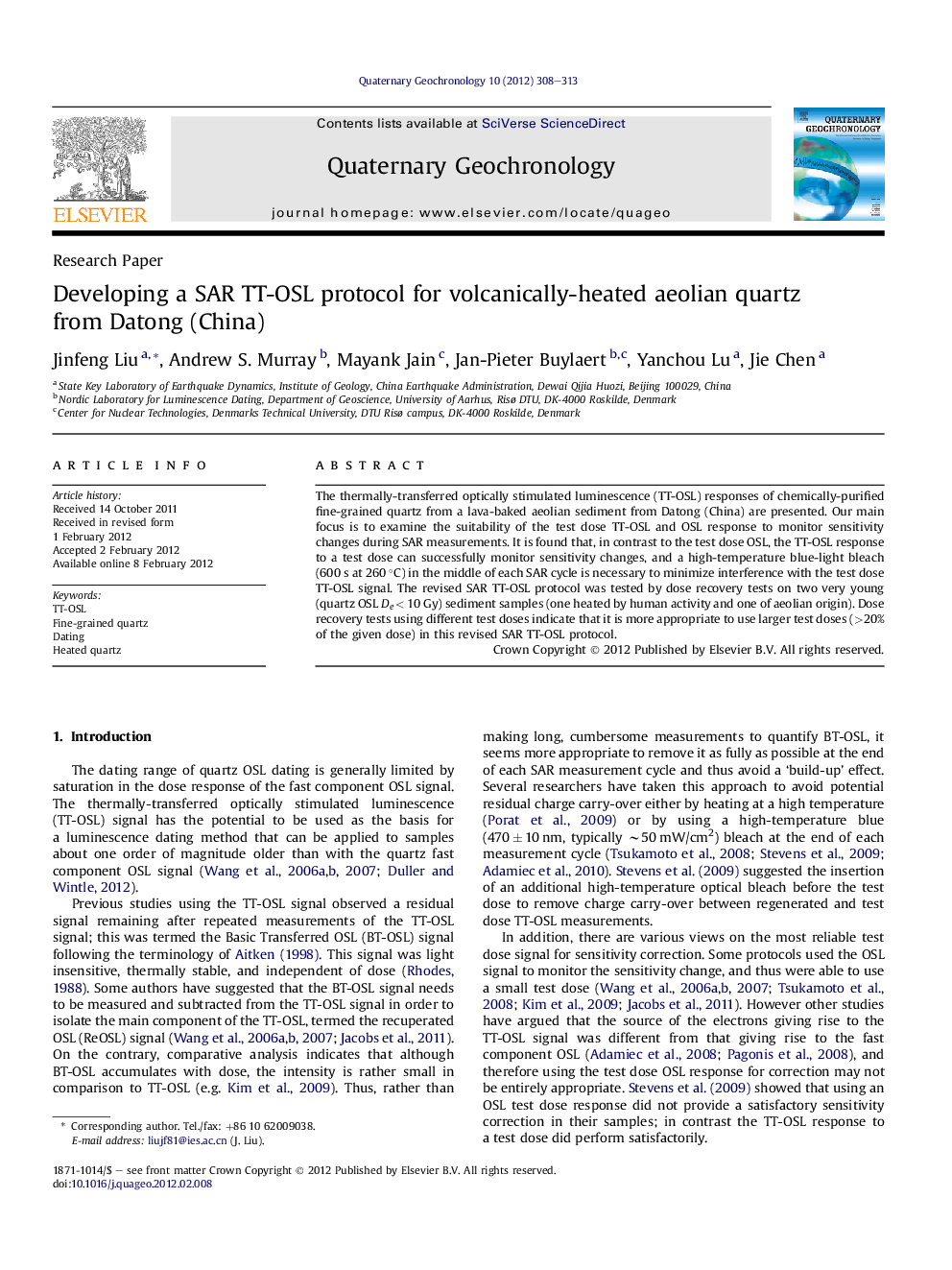| کد مقاله | کد نشریه | سال انتشار | مقاله انگلیسی | نسخه تمام متن |
|---|---|---|---|---|
| 4725138 | 1639866 | 2012 | 6 صفحه PDF | دانلود رایگان |

The thermally-transferred optically stimulated luminescence (TT-OSL) responses of chemically-purified fine-grained quartz from a lava-baked aeolian sediment from Datong (China) are presented. Our main focus is to examine the suitability of the test dose TT-OSL and OSL response to monitor sensitivity changes during SAR measurements. It is found that, in contrast to the test dose OSL, the TT-OSL response to a test dose can successfully monitor sensitivity changes, and a high-temperature blue-light bleach (600 s at 260 °C) in the middle of each SAR cycle is necessary to minimize interference with the test dose TT-OSL signal. The revised SAR TT-OSL protocol was tested by dose recovery tests on two very young (quartz OSL De < 10 Gy) sediment samples (one heated by human activity and one of aeolian origin). Dose recovery tests using different test doses indicate that it is more appropriate to use larger test doses (>20% of the given dose) in this revised SAR TT-OSL protocol.
► This article points that in a SAR TT-OSL protocol that uses test dose TT-OSL for sensitivity correction it is necessary to apply a long optical bleach at elevated temperature before the test dose is given.
► The dose response curves of the sensitivity-corrected TT-OSL have increasing values of D0 as larger test dose are used.
► Larger test doses also provided more accurate dose recovery results.
Journal: Quaternary Geochronology - Volume 10, July 2012, Pages 308–313